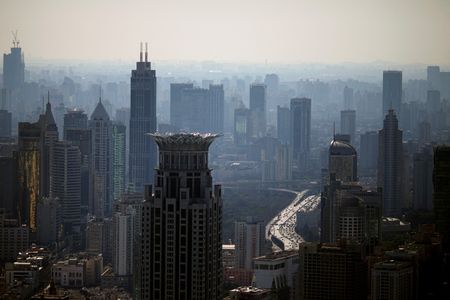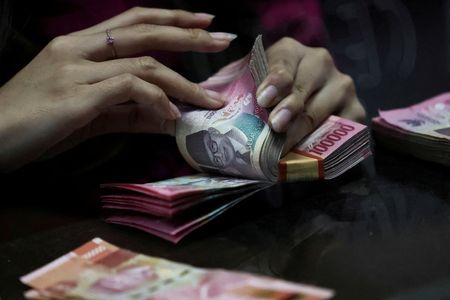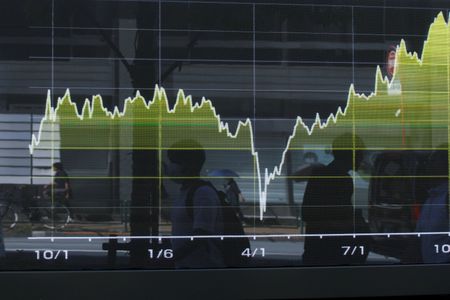LONDON (Reuters) -The World Bank lifted its 2025 growth projection for China to 4.8% and raised its forecast for much of the region, but warned of slowing momentum next year, citing low consumer and business confidence and weak new export orders.
Publishing its biannual economic outlook for East Asia and the Pacific region on Tuesday, the World Bank said it now expected China to grow 4.2% next year, after forecasting in April growth of 4.0% both this year and next.
“Growth in China, the region’s largest economy, is projected to decline … because of an expected slowdown in export growth and a likely reduction in the fiscal stimulus in light of rising public debt, as well as continued structural deceleration,” the authors of the report wrote.
The World Bank said it expected the rest of the East Asia and Pacific region to grow by 4.4% in 2025 – a 0.2 percentage point uplift – but stuck to its 4.5% prediction for 2026.
The lender blamed the subdued momentum on higher trade barriers, elevated global economic policy uncertainty and slower global growth, with political and policy unpredictability especially in Indonesia and Thailand adding to pressure.
“Firms adopt a ‘wait-and-see’ approach, delaying or scaling back capital expenditures,” the report said.
Global economic growth has been under pressure this year due to a major shakeup in U.S. economic policies. Asia, home to key export-driven economies, has been caught in the crosshairs of U.S. President Donald Trump’s unpredictable trade policy.
Data in September showed China’s factory output and retail sales registered their weakest growth in nearly a year, coming on top of other indicators suggesting the economy is still some way off from mounting a strong recovery.
Analysts expect Beijing to roll out more stimulus to fend off a sharp slowdown in the world’s second-largest economy and support the government’s annual growth target of “around 5%”.
The World Bank also urged countries to remain focused on longer-term prospects, saying that supporting near-term growth through fiscal measures may deliver less durable development benefits than deeper domestic reforms.
(Reporting by Karin Strohecker; Editing by Tom Hogue & Shri Navaratnam)










